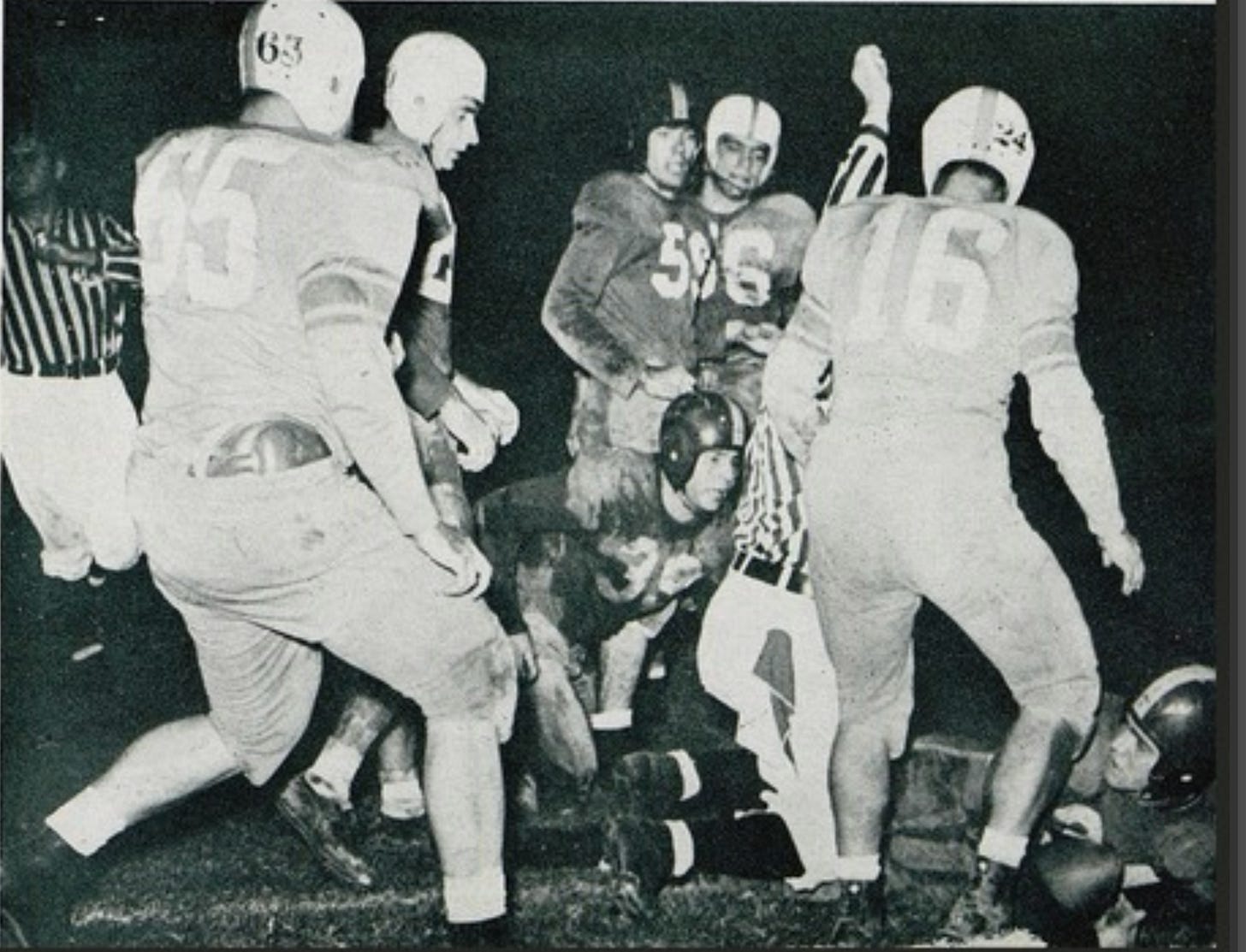Today's Tidbit... The Rise and Fall of Helmet Numbers
It is a common belief that the Los Angeles Rams were the first team to adorn their helmets with logos in 1948, but previous stories have shown the Rams followed UChicago in the 1920s, Washington in the 1930s, and perhaps others. We've also looked at teams that placed logos on the front and back of their helmets and the adoption of logos among teams playing in the Rose Bowl.
Another helmet decoration trend that I covered in How Football Became Football but not on this site was the 1950s and 1960s trend to place numbers on the sides of helmets. You can find images of teams with numbers on their helmets before the mid-1950s, but most are small numbers on the back that do not match players' uniform numbers. Rather than representing uniform numbers, they appear to distinguish each helmet so players can identify their bonnets and for inventory control purposes in the equipment room.
The situation changed, however, with the arrival of nationally televised football games in the early 1950s. Television's first impact on football uniforms came when visiting teams started wearing white jerseys. Some teams wore white in the past, especially when the teams had similar school colors, but fans in the stands could easily distinguish red from blue jerseys. However, fans watching at home on black-and-white televisions could not tell the difference between red and blue. The NFL required visiting teams to wear white in 1957, and the NCAA waited until 1983, long after everyone adopted the approach, even small colleges and high schools that never appeared on television.
The rise of television and the increased use of photographs in newspapers led to a 1955 suggestion by the National Photographers Association (NPA) that conferences require teams to add player numbers on jersey shoulders or helmets to make it easier to identify players. Whether the NPA influenced their decision is unknown, but Georgia Tech opened the 1955 season against Miami wearing TV numbers on their shoulders, making them the first football team to do so. The game was also the first football game televised in color. West Virginia opened the season a week after Georgia Tech sporting numbers on their helmets, and the New York Giants added numbers on their sleeves in 1956.

Others caught the wave when Big Eight conference coaches agreed that all teams would add numbers on their helmets for the 1957 season. (Kansas received an exception because they already had numbers on their sleeves.) Among the schools caught in the TV number tide was Alabama, which added numbers on the sides of their helmets in 1957, the year before Bear Bryant returned to Tuscaloosa.


Other conferences adopted similar rules over the next few years, and some teams added numbers because that is what all the cool kids were doing. Numbers began appearing on the sides of NFL and AFL helmets as well. Still, as TV numbers increasingly appeared on jersey shoulders and sleeves, the boring helmet numbers were replaced by logos, and the numbers disappeared or morphed into small digits on the front or back of the helmets.
Today, Alabama and a few others sport numbers on the sides of their helmets. Ironically, the helmet numbers that once helped identify individual players have transitioned in the colleges to a logo-of-the-week phenomenon that is no longer helpful in identifying which teams are playing. Unfortunately, it appears that the days of consistent helmet logos are, as they say, numbered.
Football Archaeology is reader-supported. Click here to buy one of my books or otherwise support the site.



I'm fascinated by size differences--some quite large--of, ahem, some pro teams in their front and rear helmet numerals: Giants, Steelers, and those Colts
Don’t forget Frank Leahy’s 1940 Notre Dame team that had what looked like stenciled numbers on the back of their “gold” leather helmets.